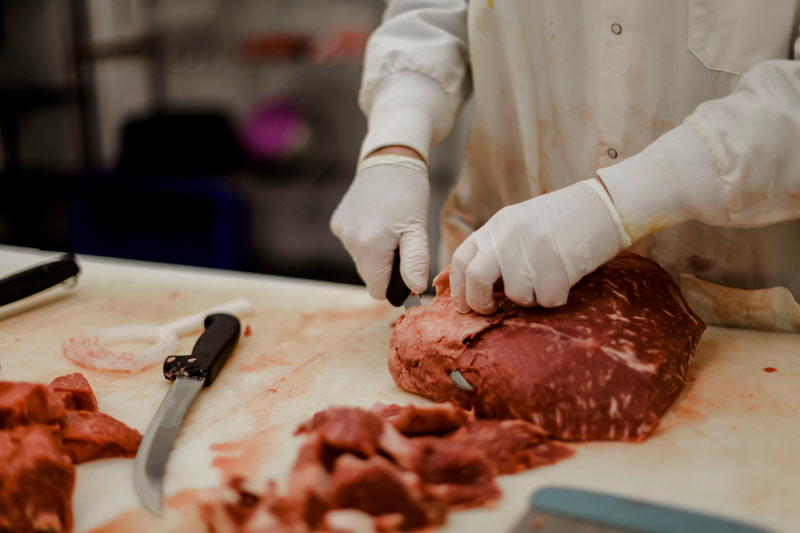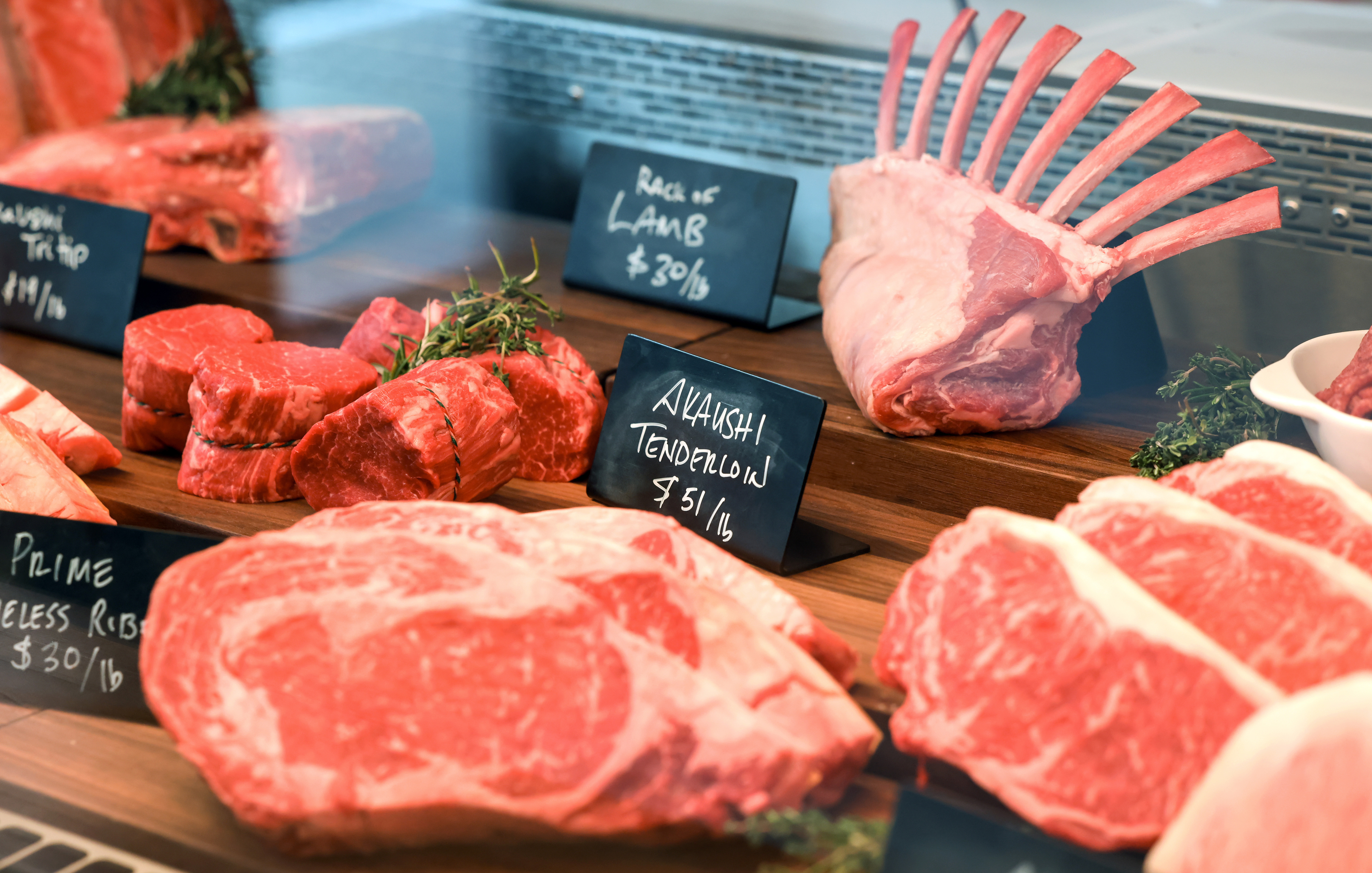Check Out Bagley Farms Meat Market Edwardsville IL for Farm-Fresh Meat and Specialty Cuts
Check Out Bagley Farms Meat Market Edwardsville IL for Farm-Fresh Meat and Specialty Cuts
Blog Article
Uncover the Art of the Butcher's Cut in a Modern Meat Market
In the ever-evolving landscape of modern-day meat markets, the butcher's cut has actually transcended its standard roots, combining age-old craftsmanship with modern methods. What really establishes the modern butcher apart is their capability to build a much deeper connection between customers and the beginnings of their meat.
Advancement of Butchery Techniques
The advancement of butchery strategies mirrors an abundant tapestry of technology and adaptation driven by advancements in technology, adjustments in customer demand, and a deeper understanding of meat science. Historically, butchery was a craft passed down through generations, with techniques sharpened over centuries to maximize return and taste. The industrial revolution ushered in automation, changing conventional methods and allowing large-scale handling.
The mid-20th century saw butchery strategies better improved by clinical understandings into muscle biology and meat aging, improving both tenderness and taste. Innovations like vacuum cleaner packaging and refrigeration prolonged product shelf-life, permitting butchers to expand offerings and boost quality assurance. This period also marked the increase of specific devices, such as band saws and meat slicers, which enhanced precision and effectiveness in meat processing.

The 21st century has actually introduced digital innovation into the butchery world. Digital systems now help in tracking animal provenance and optimizing cuts to fulfill specific consumer choices. Furthermore, a resurgence in artisanal butchery has actually emerged, blending typical skills with contemporary knowledge to cater to consumers seeking honest and lasting meat options. This development highlights a vibrant interaction in between tradition and advancement, conference contemporary needs while preserving the craft's heritage.
Comprehending Meat Cuts
Comprehending the complexities of meat cuts is important for both butchers and customers looking for high quality and value. For butchers, specific cuts show skill and regard for the craft, ensuring minimal waste and optimum return.

Recognizing muscular tissue composition is critical; muscle mass utilized a lot more often by the pet have a tendency to be tougher and are best suited for slow cooking approaches, while less-used muscle mass, like those found in the loin, are a lot more tender and perfect for barbecuing or roasting. Familiarity with these distinctions encourages customers to make educated options, improving their cooking undertakings.
Selecting Quality Meat
Choosing the ideal meat includes even more than simply selecting a visually enticing item from the screen. The art of selecting top quality meat needs a critical eye and expertise of particular features that symbolize freshness and excellence.
Secondly, think about the marbling, which describes best site the white flecks of fat within the muscle mass. Proper marbling is a vital sign of tenderness and taste, as it thaws during cooking, enhancing the meat's juiciness. Keep in mind, greater marbling often associates with premium high quality cuts, such as USDA Prime.
Texture is another essential element; meat should feel solid to the touch, not slimed or excessively soft. Furthermore, bear in mind the aroma. Fresh meat needs to have a tidy, neutral scent, without any sour or off-putting odors.
Combining Cuts With Food Preparation Approaches

Alternatively, harder cuts like brisket and chuck roast are abundant in collagen, which damages down right into gelatin when cooked slowly. These cuts are excellent for braising or slow-moving roasting, read review enabling the meat to soften over time and develop deep, intricate tastes. Cuts such as short ribs and pork shoulder fare well with slow-cooking methods, where prolonged cooking times transform their robust structures into delicious dishes.
Lamb shanks and oxtail, which need prolonged food preparation to soften, are best candidates for cooking or slow-moving simmering. These methods coax out rich, hearty flavors while maintaining wetness. By comprehending the distinct qualities of each cut, chefs and home cooks alike can elevate their culinary productions, making certain each dish is both pleasing and unforgettable.
The Butcher's Duty Today
Navigating the developing landscape of the modern meat market, the butcher's function today extends past mere prep work of cuts. Contemporary butchers are culinary artisans, educators, and supporters for sustainable methods. They bridge the gap in between the ranch and the fork by making certain ethical sourcing, comprehending pet husbandry, and prioritizing openness in the supply chain. This shift mirrors the growing consumer need for quality over quantity, where provenance and animal well-being are vital.
Along with crafting precise cuts, butchers currently engage directly with consumers, using cooking guidance and tailoring options to fit specific needs and choices. Their proficiency in meat aging, marbling, and taste profiles empowers consumers to make informed decisions, improving their culinary experiences. This individualized service exemplifies the butcher's developing role as a relied on consultant in the kitchen.
In addition, butchers are critical in lessening waste, using entire animals to develop varied products such as sausages and supplies. This thorough approach not just values the pet but likewise lines up with contemporary sustainability goals. This way, the modern butcher embodies both tradition and advancement, adjusting to investigate this site an ever-changing market while maintaining the artistry and honesty of their craft.
Verdict
Proficiency in understanding diverse meat cuts and top quality indicators equips butchers to provide enlightened referrals, lining up specific cuts with optimum food preparation approaches. By recognizing historic techniques while welcoming contemporary needs, the butcher's role remains crucial in today's innovative meat market.
Report this page